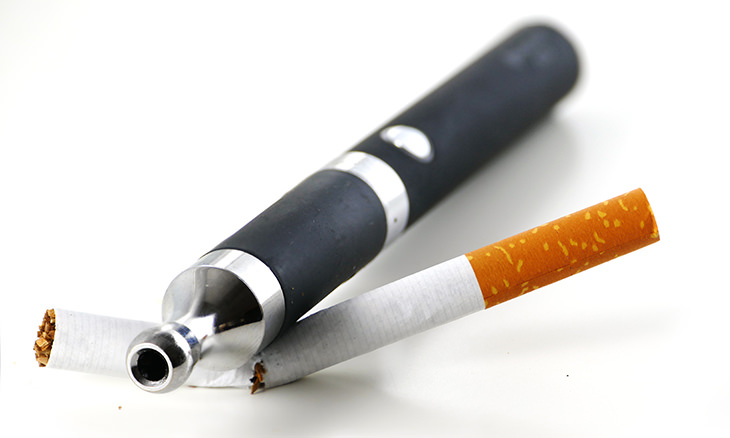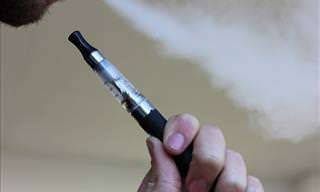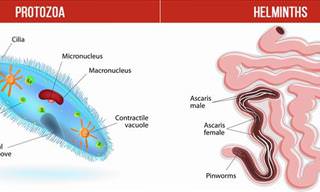As the number of cigarette and cigar smokers declines around the world (bar the Eastern Mediterranean and Africa), the number of people using vaporizers as a substitute is on the rise. The thing is that vaporizers, or vapes for short, are still somewhat of an unknown quantity in terms of their true health effects. Nevertheless, their meteoric rise warrants a closer look:
How Does a Vape Work?

A vape is a smokeless system that works by heating up herbal material such as tobacco. The difference between smoking a cigarette, pipe or cigar to a vape, however, is that a vape doesn’t actually make the herbal material inside combust. What it actually does instead is cause the essential oils to boil until a vapor is created. This vapor is what you inhale when you use a vape, as opposed to smoke. The result of this is you get the same effect as if you were smoking, but with much less of the harmful health effects, particularly on the lungs.
Health Benefits of Vaping over Smoking

The surgeon-general of the United States released his first-ever report on vaping in early 2017. The study consisted of five different groups, namely current smokers, current smokers who also vape, current smokers who also use nicotine replacement therapy such as gum or patches, former smokers who have made the switch to vapes, and former smokers that made the switch to nicotine replacement therapy.
Across the five groups, there were a total of 181 volunteers. Urine samples were collected from each participant. The urine samples determined that all of the participants were receiving similar amounts of nicotine, but those who vaped rather than smoked were found to have substantially-reduced level of measured carcinogens and toxins in their systems.
Smokers were found to have 57% higher levels of three volatile organic compounds, (ethylene oxide, acrylonitrile, and vinyl chloride) and 97% higher levels of acrylonitrile (another VOC) and a tobacco-specific nitrosamine, a potent carcinogen.
It’s perhaps unsurprising that these results were garnered, considering the fact that vaping involves the inhalation of propylene glycol, glycerin, water, flavoring, and nicotine, whereas smoking involves inhaling thousands of chemicals, with hundreds of those being toxic or carcinogenic. With that being said, misconceptions about vaping are pervasive throughout the world. This is down to public health officials and anti-tobacco activists who seem hell-bent on obscuring the truth.
Instead of using the rise of vaping as an opportunity to reduce smoking-related disease, the likes of the Surgeon-General, Food and Drug Administration and the Centers for Disease Control have taken to portraying vaping as a menace to public health. All of these individuals and organizations refer to vapes as “tobacco products”, which is essentially a misrepresentation of the risks of vaping when compared to those posed by smoking.
The Different Kinds of Vape You Can Buy

There are two principle types of vape available on the consumer market today, namely conduction and convection vapes. The former works by heating up the herbal matter that you place inside by it being in contact with an element that’s already hot, whereas the latter works by blowing hot air over the herbal matter to heat it up. Let’s take a closer look at the two types:
1. Conduction
Conduction vapes were the first type to hit the market, and they worked decently enough, but they suffered from a major design flaw. They were only able to heat up a single part of the herbal material, leaving the rest untouched. Although turning up the heat inside the vape would cover more of the herbal material, this would sometimes cause it to combust, eliminating the purpose of vaping entirely.
2. Convection
Convection vapes were developed after conduction vapes, and are overall much more reliable. This is because they used heated air to boil the essential oils in the herbal material, thus allowing the user to get much more vaporization. They tend to be thermostatically controlled, because adjusting their temperature is much harder than in conduction vapes. As a result, they tend to be more expensive to buy.
In conclusion, conduction is older and cheaper, whereas convection is newer and more expensive, but you pay for better technology and greater efficiency.
Health Risks of Vaping

A study conducted at the University of California determined that vapes had very high levels of protein that were linked to very serious lung conditions such as chronic obstructive pulmonary disease and cystic fibrosis.
The mucin 5AC protein, which is a mucus secretion that normally appears in bronchitis and asthma sufferers, was also found in vape users. Although it is undoubtedly overall less harmful than smoking, comparing vaping and smoking is somewhat like comparing apples and oranges, according to researchers. Both smoking and vaping produce their own signatures of harm in the lungs, but the damage caused by vaping is much less in comparison to smoking.
What is Popcorn Lung?
A pulmonary hamatorma, also known as popcorn lung, is a kind of lung cancer that is caused by a high level of exposure to formaldehyde. Developing such a condition is one of the major risks associated with vaping, but the extent to which vapes can cause it is still largely unproven. The first study conducted in this area was not done properly, because it later emerged that improper machine testing was producing excessively high levels of formaldehyde that did not accurately reflect the levels that vapes use purposefully.
What about the Exploding Battery Issue?
Numerous horror stories have emerged about vapes exploding in people’s faces, but this is more associated with the older conduction vape types. With that being said, the cause of a vape explosion is always down to the lithium-ion batteries that are used to power them. What happens is that the electrolytes inside the battery powering a vape, heat up to their boiling point, and the internal pressure builds up to a point where the seal at the end of the battery ruptures, instantaneously releasing all the pressure.
You can prevent this from happening by keeping your vape out of direct sunlight, making sure that wherever you’re charging it isn’t at risk of short-circuiting, and also be wary of overcharging it. If you keep in mind that it’s heat that causes vape batteries to explode, you will be fine.
Conclusion

If you still need your nicotine fix, then vaping is definitely the way to go over smoking conventionally, however, there still are health risks associated with vaping, and they are largely an unknown quantity. As a result, the best thing you can do is not to smoke or vape at all, but if you really must, then it’s time to discover the world of vaping on your own terms.
Images by Deposit Photos.
 Go to BabaMail
Go to BabaMail


























































